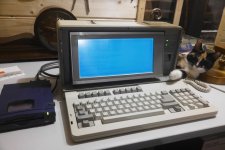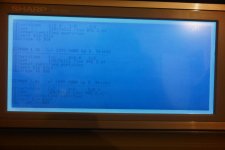Adventurer
Experienced Member

I like floppy based vintage computers, so it came as no surprise, that
I bought the Sharp PC-7000 as well. After all. who can resist the power of a
dual 5.25 inch floppy drive, large 384 KB of RAM, and powerful 7.87 Mhz Intel
8086 CPU. Judging from the pictures on E-bay, it looked pretty clean, working,
and came with original master disks with some more software as well. The only
thing that puzzled me was a giant ugly cooler mounted on the back of the unit,
given tha fact, that the only cooler this system needs is the one mounted
inside, which cools both - the power adapter and a floppy drive. Still, the
price was pretty good, so I thought this is nothing serious, and I can remove
the cooler later. It turned out a bit different way than I expected.

As the package was received, at least, it arrived undamaged, and did
boot into DOS 2.11, as pictured on the Ebay. A massive cooler was making a lot
more noise than this machine should, so I opened the cover, cut the old wires
with detoriated isolation - which means this "upgrade" had been performed a
long time ago. I put everything back, and to my surprise, the machine refused
to boot. I inserted Sharp Master disks - it booted further, but crashed dead
(even Ctl+Alt+Del did not help at all. Multiple on/off switching did not help
as well, it started to perform worse and worse. Decided to put a smaller cooler
inside, directly over EEPROM chips, since this was where the old cooler was
blowing. Some minutes later, the computer booted, I succesfully created a copy
of SHARP Master disk, launched some programs, and it hanged again. This time I
noticed, if I let it cool down a bit, it works again for some minutes. Now I
understood the idea of the cooler - the cooler it stays, the longer it works,
but still crashes eventually. Decided to use this to install Laplink 3 via COM
port, using my now trusty NEC MobilePro 386 SX/20. Laplink was finally copied,
but it would crash all of the time when it was launched. I could not copy any
of the programs I wanted, and all these restarts made me think I have bought a
lemon. Something to display, but not to use.
This evening I decided to go further, and give this machine one more
chance. The idea - dissasemble, disconnect everything (EEPROM chips including),
clean, reconnect, reassemble. Meanwhile I had a better chance to look inside
the machine as well, and test capacitors with ESR meter (only a few had
readings out of range, most of them were good). The system board is really
tiny, compared to floppy drive unit or even power adapter PCB, which is almost
the same size as the system board itself. Lots of connectors, with lots of
wires - at leas they have color markings, so it is easyer to plug them back.
RAM chips are soldered, and this machine does not have any extra RAMs, which I
could remove to test it. Still, my guess the main problems are with EEPROM,
since system clock can display time such as 60:07:54, with interesting date
values as well. At the end I removed the small cooler I installed, with the
idea - it will either work or will be dead.
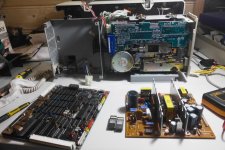
The back of the machine looks much better now:
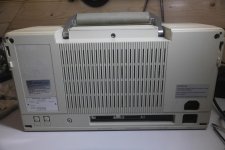
To my surprise, things had changed after reassembly - the experience
was completely different now. Laplink worked, files could be copied, with
occasional hickups, but nothing major. Floppy formatting - fine, file copy -
fine, running text editor (PC-Write) with larger text files - fine as well. The
only problem - diskcopy constantly crashes on 21-th sector, but I suspect there
might be a problem with target floppies as well - I have only a bunch of
pretty much used ones, with possible read/write problems. Still, I did use
sys.com to create some bootable floppies with the programs I need, and a
multiple copies of Laplink as well - just in case. IOMEGA zip drive with
palmzip.sys worked great as well, so I can use some extra storage, should the
need arise, however, it works much slower than on IBM PC Convertible. Still, I
can not complaing - from a system to be put away this one is suddenly willing
to work, and in fact, it is working 6 hours in a row, without any indications
of previous "overheating".
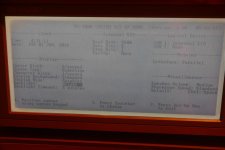
This machine has some rather unique features as well. How about an LCD
screen, which changes angle when you push a button on the right side? (a
mechanical action it is, not electric, but it moves slowly like it is being
powered). A separate "Set up" key on the keyboard to call for the BIOS settings
when I need them (I wish all my vintage computers had a "Set up" key like
this). The keyboard is nice as well, but it sure not beat the tactile feedback
of an IBM 5140 keyboard.
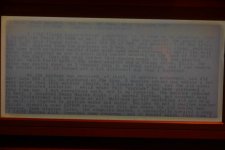
Now, the things I need to find:
A good DOS floppy image program, which can be run on DOS 2x
A good file explorer, such ar Norton/Volcov Commander, with the
same requirements. VC works only on DOS 3x as I found out...

